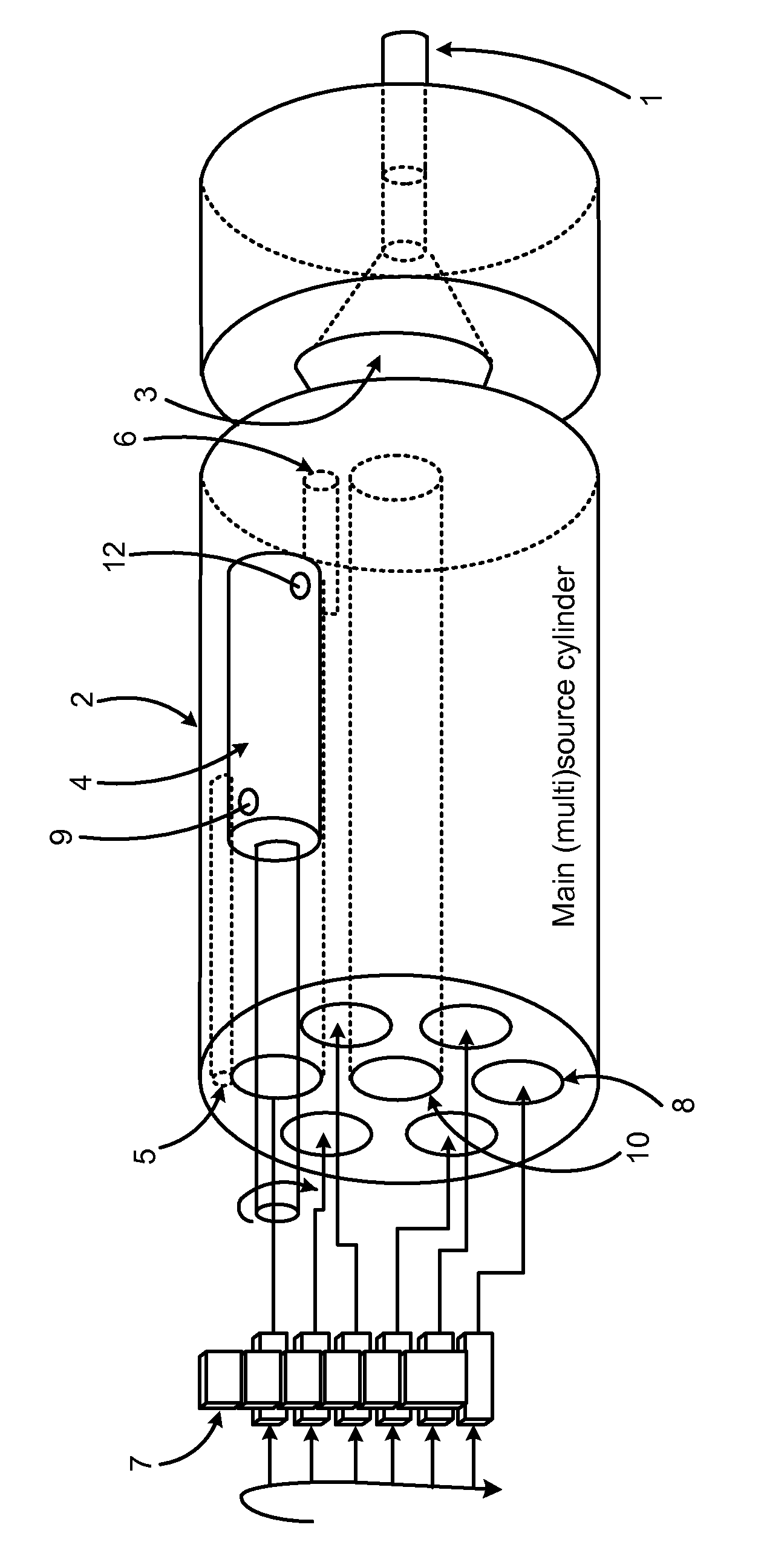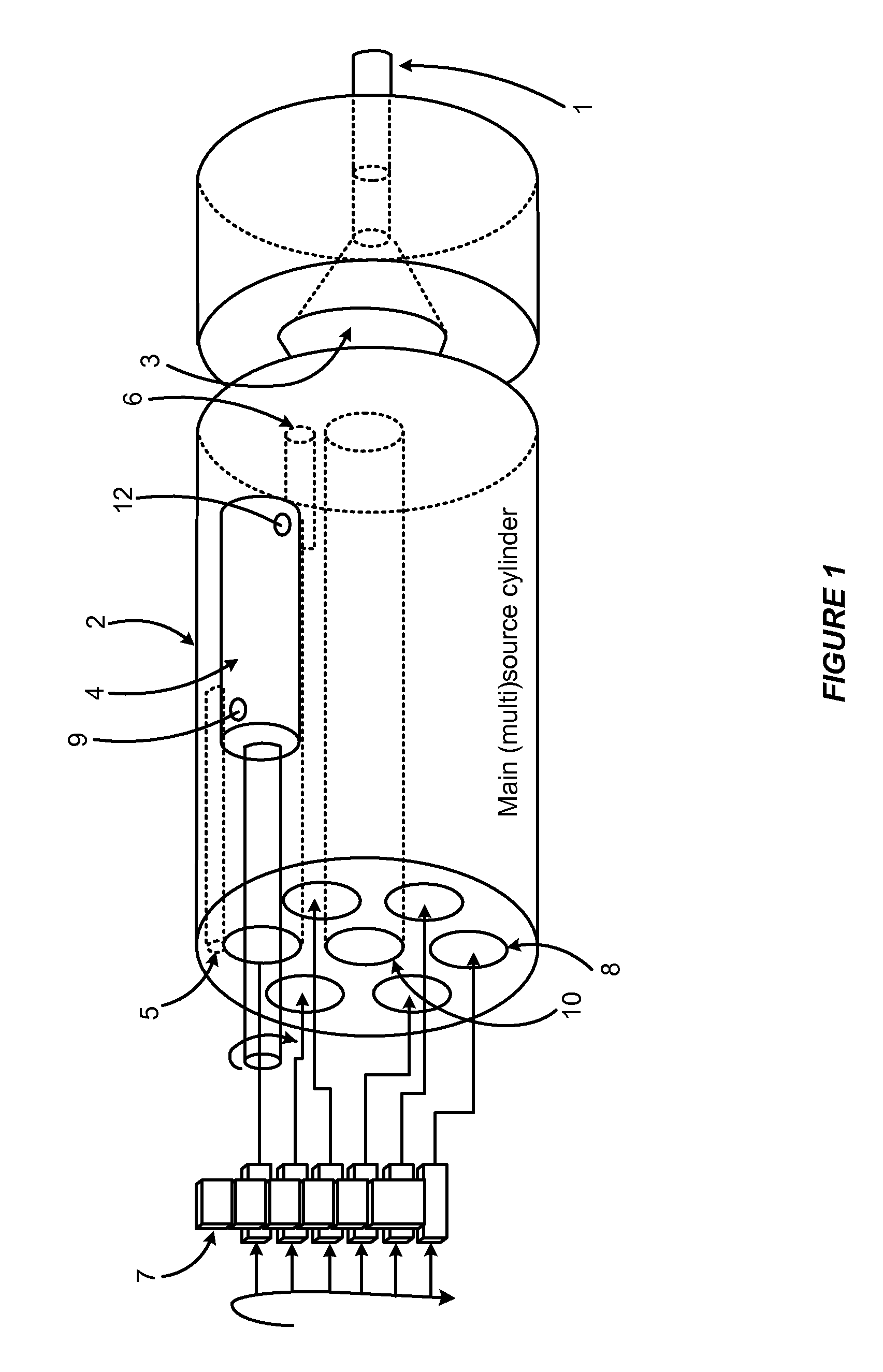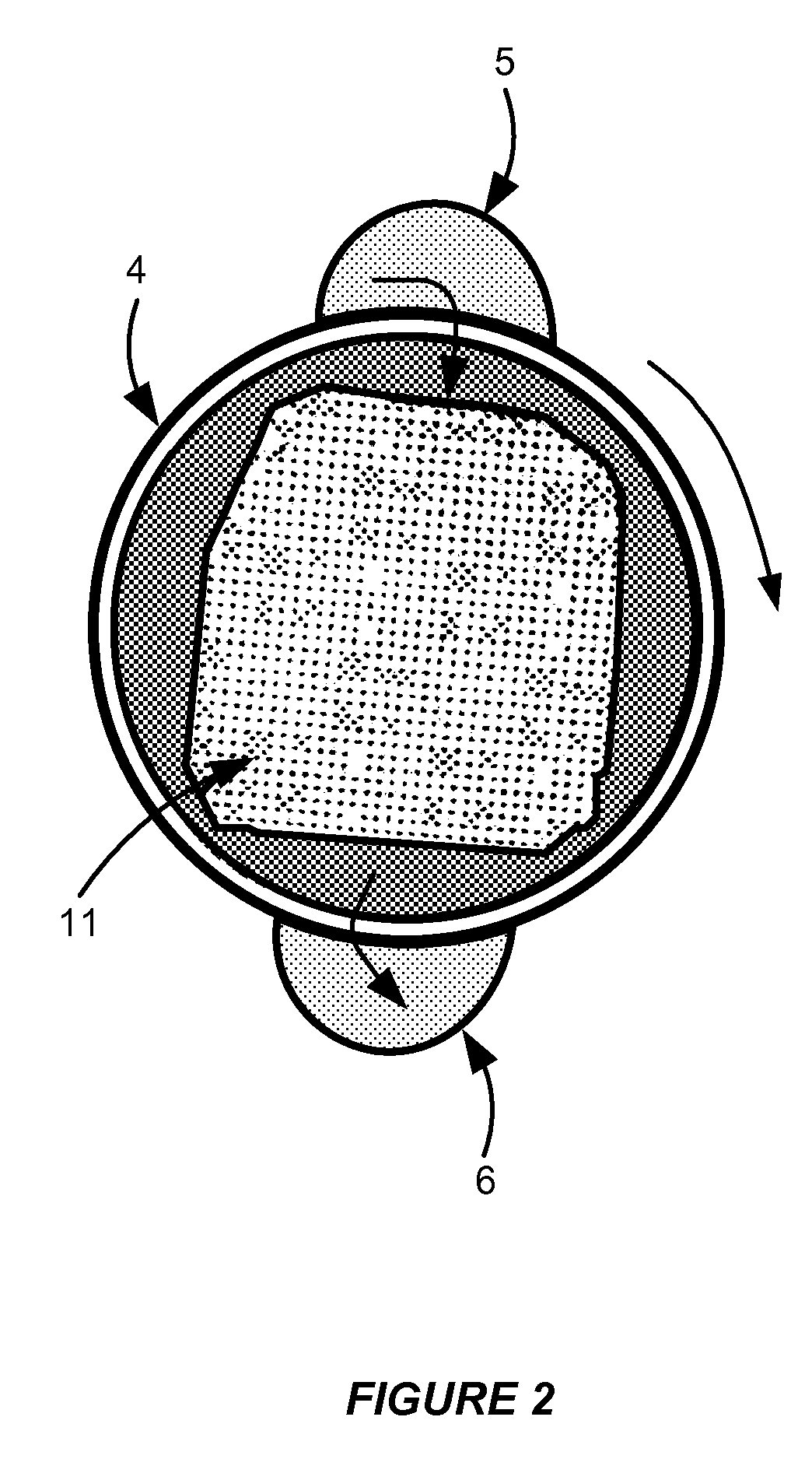Device and Method for Organic Vapor Jet Deposition
a technology of organic vapor jet and vapor jet deposition chamber, which is applied in the direction of vacuum evaporation coating, chemical vapor deposition coating, coating, etc., can solve the problems of large fraction of evaporant coating the cold walls of the deposition chamber, difficult control of film thickness uniformity and dopant concentration over large areas needed for manufactured products, and contaminating system and substrate with particulates
- Summary
- Abstract
- Description
- Claims
- Application Information
AI Technical Summary
Benefits of technology
Problems solved by technology
Method used
Image
Examples
example 1
[0053]In Example 1, an embodiment of the device of the invention as seen in FIG. 1 was used to deposit an organic material on a silicon substrate. That is, the device included a single source cell 4 containing an organic material, aluminum tris(8-hydroxyquinoline)(Alq3), and a single nozzle 1 with an inner diameter of about 350 μm. In this example, the distance between the end of the nozzle 1 and the substrate was in the range of about 0.5 to about 1.0 mm, the deposition pressure was about 270 mTorr, and the source cell temperature was about 222° C.
[0054]FIG. 6 shows a photograph of the deposited Alq3 from Example 1 (from an overhead view looking down on the deposited Alq3) showing interference fringes due to the variation in thickness of the deposited Alq3. The width of the deposited Alq3 shown in FIG. 6 is approximately 500 μm.
example 2
[0055]In Example 2, an embodiment of the device of the invention as seen in FIG. 1 was used to deposit an organic material on a silicon substrate. That is, the device included a single source cell 4 containing an organic material, Alq3, and a single nozzle 1. However, in the embodiment of the device used in Example 2, the nozzle 1 had an inner diameter of approximately 50 μm. In this example, the distance between the end of the nozzle 1 and the substrate was in the range of about 0.5 to about 1.0 mm, the deposition pressure was about 270 mTorr, and the source cell temperature was varied within the range of 209° to 225° C.
[0056]FIG. 7 shows a photograph of the deposited Alq3 from Example 2 (from an overhead view looking down on the deposited Alq3) showing interference fringes due to the variation in thickness of the deposited Alq3. The width of the deposited Alq3 shown in FIG. 7 is approximately 100 μm.
[0057]The physical shape of the deposited Alq3 from Example 2 is shown in FIG. 8. ...
example 3
[0058]In Example 3, an embodiment of the device of the invention as seen in FIG. 1 was used to deposit an organic material as part of the fabrication of an OLED. The structure of the fabricated OLED 98 can be seen in FIG. 9.
[0059]The process used to fabricate the OLED 98 shown in FIG. 9 proceeded as follows. A substrate 91 was comprised of a 12.5 mm×12.5 mm×1 mm glass slide. The substrate 91 was pre-coated with a layer 92 of indium tin oxide (ITO), which served as the anode of the OLED 98 structure. A hole injection layer 93 was deposited onto the ITO-layer 92, wherein the hole injection layer 93 comprised about 100 Å of copper phthalocyanine (CuPc). A hole transporting layer 94 was deposited onto the hole injection layer 93, wherein the hole transporting layer 94 comprised about 450 Å of 4,4′-bis[N-(1-napthyl)-N-phenyl-amino] biphenyl (α-NPD).
[0060]Next, an embodiment of the device of the invention as seen in FIG. 1 was used to deposit dots 95 of the organic material Alq3, a green ...
PUM
| Property | Measurement | Unit |
|---|---|---|
| temperatures | aaaaa | aaaaa |
| temperatures | aaaaa | aaaaa |
| temperatures | aaaaa | aaaaa |
Abstract
Description
Claims
Application Information
 Login to View More
Login to View More - R&D
- Intellectual Property
- Life Sciences
- Materials
- Tech Scout
- Unparalleled Data Quality
- Higher Quality Content
- 60% Fewer Hallucinations
Browse by: Latest US Patents, China's latest patents, Technical Efficacy Thesaurus, Application Domain, Technology Topic, Popular Technical Reports.
© 2025 PatSnap. All rights reserved.Legal|Privacy policy|Modern Slavery Act Transparency Statement|Sitemap|About US| Contact US: help@patsnap.com



